The world of artificial intelligence has been rapidly evolving and transforming various industries in ways we never thought possible. One of the most exciting developments in this field is the chat-based interface, which has revolutionized the way we interact with machines. With the introduction of OpenAI’s chatGPT API, we are now on the cusp of a new era in the development of conversational AI. The chatGPT API has the potential to bring about significant changes in the way we interact with computers, providing new and innovative solutions for businesses and individuals alike. This article will delve into the potential of the upcoming chatGPT API, exploring its features and capabilities, and what it means for the future of conversational AI. Get ready to discover how this cutting-edge technology is poised to revolutionize the way we interact with machines and unlock a world of new possibilities.
1. What Is ChatGPT API?
GPT-3 API is a cloud-based platform that enables developers to access and use OpenAI’s GPT-3 language model. The API provides a simple and straightforward way to integrate the capabilities of GPT-3 into various applications and services. With the API, developers can create AI-powered chatbots, language translation services, content summarization tools, and much more.
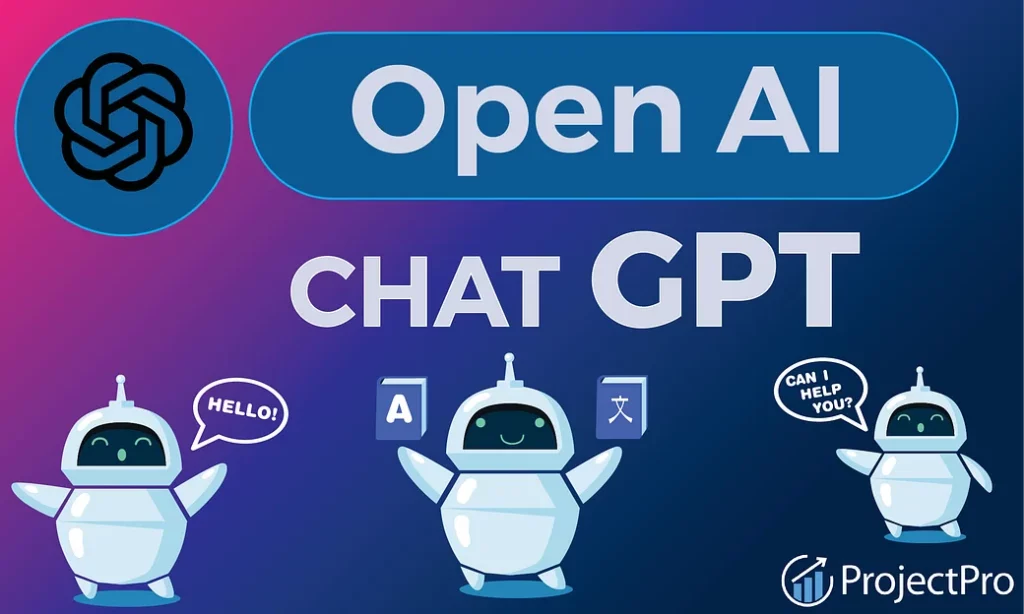
GPT-3 is a highly advanced language model that has been trained on vast amounts of text data from the internet. This training enables it to generate human-like text, understand and respond to natural language questions, and even perform simple reasoning tasks. The API provides developers with access to the full capabilities of the model, allowing them to build sophisticated AI-powered applications that can improve customer engagement, streamline workflows, and drive innovation in various industries.
The GPT-3 API provides a simple RESTful interface that allows developers to easily communicate with the model. It supports multiple programming languages and platforms, making it easy to integrate into existing systems and workflows. The API is highly scalable and can handle large volumes of requests, making it suitable for use in large-scale production environments.
In conclusion, the GPT-3 API is a powerful tool for developers looking to leverage the capabilities of OpenAI’s cutting-edge language model. With the API, developers can build and integrate AI-powered applications that can generate natural language text, answer questions, summarize articles, translate languages, and much more, driving innovation and improving the customer experience.
2. Access chatGPT API
At the moment there is a waiting list to access chatGPT API for the public. To join the waiting list click here.
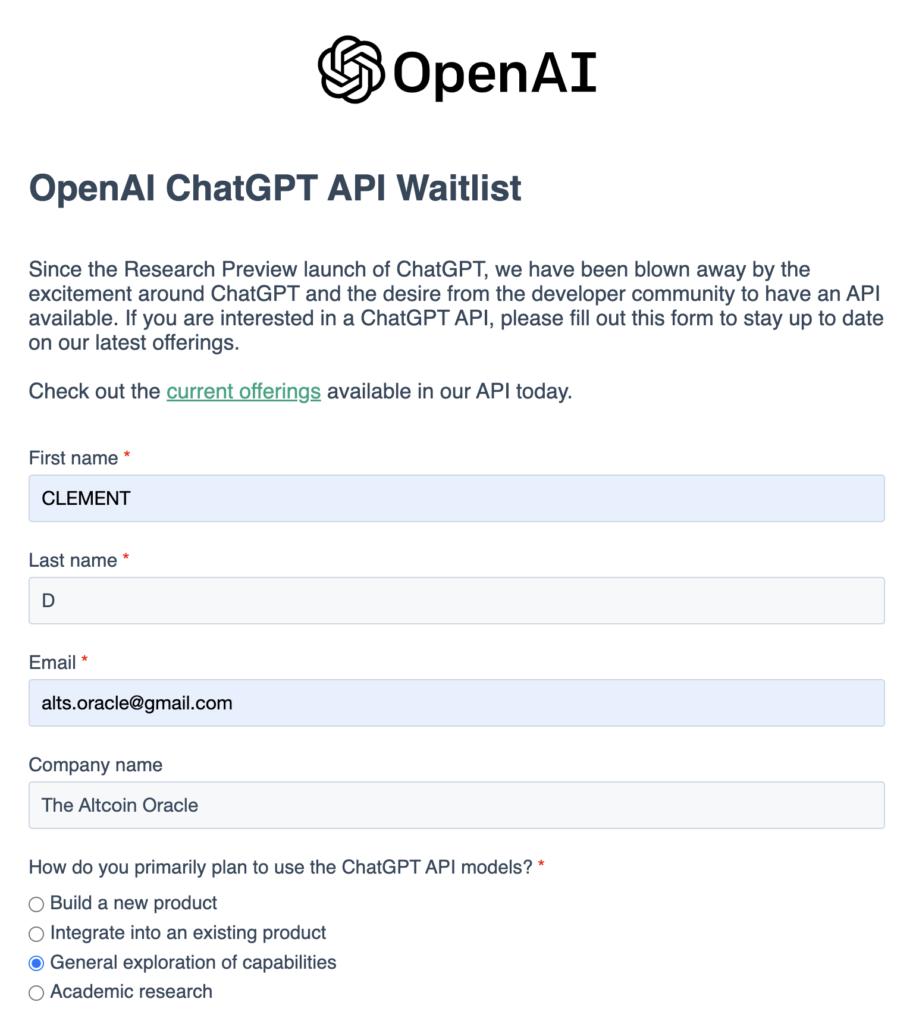
In the meantime you can investigate the other openAI APIs available:
OpenAI offers several APIs for natural language processing (NLP) and artificial intelligence (AI), including:
-DALL-E API: a new image generation API that can create unique images from textual descriptions.
-Codex API: a code generation API that can generate code in a wide range of programming languages based on natural language descriptions.
-CLIP API: a vision and language API that can understand the relationship between text and images, allowing for new applications in image recognition and other areas.
-Microscope API: a platform for training, deploying, and scaling AI models in the cloud.
Each API has its own unique features and capabilities, and they can be used individually or in combination to create powerful AI and NLP applications.
3. The completion API
Another possibility is to use the completion API, yet another API that’s live and usable, priced by request.
The OpenAI Completion API is a part of OpenAI’s GPT-3 (Generative Pre-trained Transformer 3) platform, which is a powerful language generation API. The Completion API allows developers to generate natural language text, including sentences, paragraphs, and even longer-form documents, based on an input prompt or context.
The API can be used to generate a wide variety of content, including chatbot conversations, automated writing, and other applications that require natural language generation. The generated text is often highly human-like, which makes the API useful for a wide range of use cases.
To use the Completion API, developers provide an input prompt or context, and the API generates a response based on its training data and model parameters. The API can be used through a variety of programming languages and frameworks, including Python, JavaScript, and others.
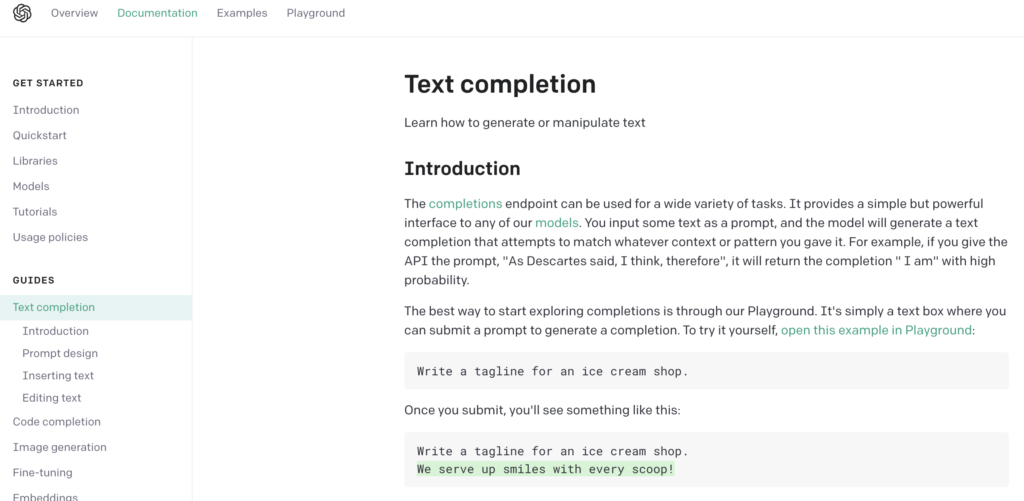
You can use it and build on-demand content. You can even use chatGPT itself to generate snippets for the ChatGPT API:
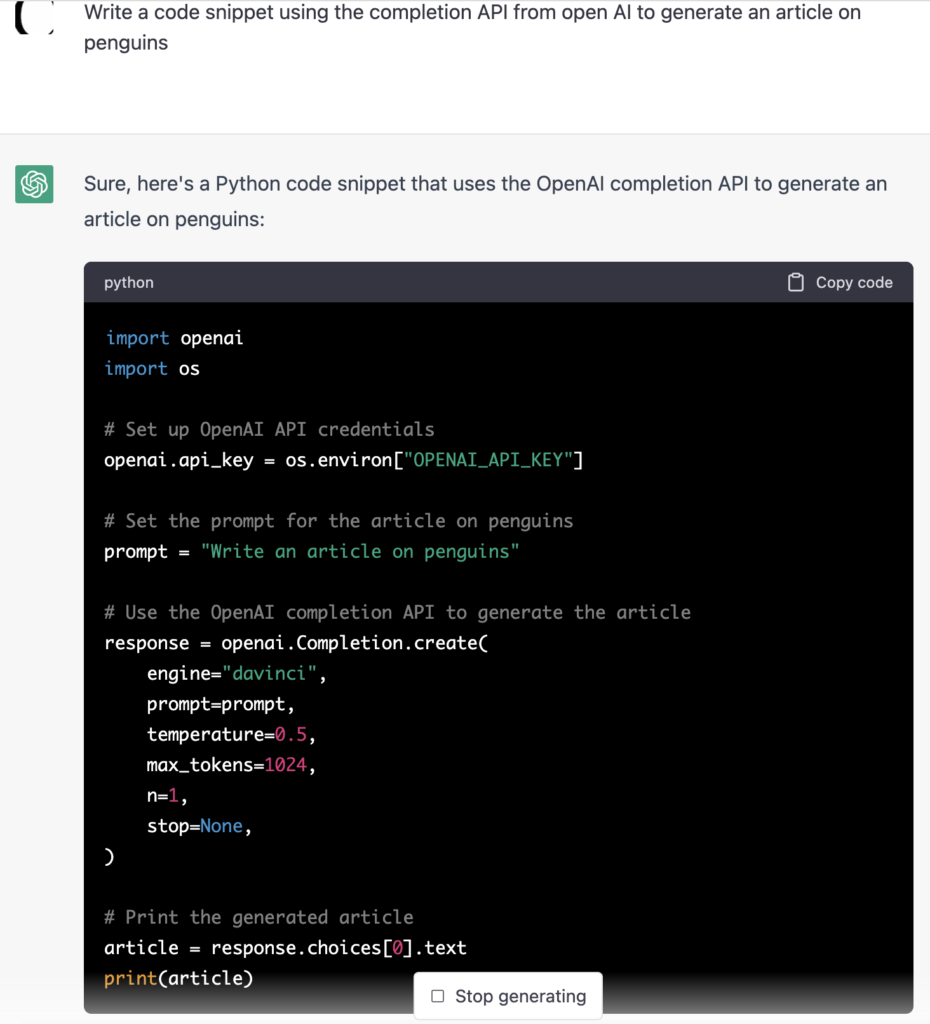
Here is the snippet to copy/paste:
import openai
import os
# Set up OpenAI API credentials
openai.api_key = os.environ["OPENAI_API_KEY"]
# Set the prompt for the article on penguins
prompt = "Write an article on penguins"
# Use the OpenAI completion API to generate the article
response = openai.Completion.create(
engine="davinci",
prompt=prompt,
temperature=0.5,
max_tokens=1024,
n=1,
stop=None,
)
# Print the generated article
article = response.choices[0].text
print(article)
In this code, we first import the OpenAI Python library and set up our API credentials. We then set the prompt variable to the text that will be used to generate the article. We use the openai.Completion.create() method to send a request to the OpenAI API to generate the article. We pass in the engine parameter to specify which OpenAI language model we want to use (in this case, the davinci model), as well as some other parameters like temperature and max_tokens that control how the model generates text. Finally, we print out the generated article that we received in the API response. You can adjust the parameters and the prompt to generate different articles on penguins.
4 An Alternative: A Reverse-Engineered API
There is a reverse-engineered alternative here while waiting for the official version.
Reversed engineering refers to a situation where a developer has reverse-engineered the behavior and functionality of an API by analyzing its inputs, outputs, and behavior. This is sometimes done to gain insights into the workings of an API, especially if the API is not publicly documented or if the developer needs to work around limitations of the API.
In general, it is not recommended to reverse-engineer APIs, as it may violate the terms of use and intellectual property rights of the API owner. It is always best to follow the API’s official documentation and guidelines to ensure that you are using the API in a legal and supported manner.
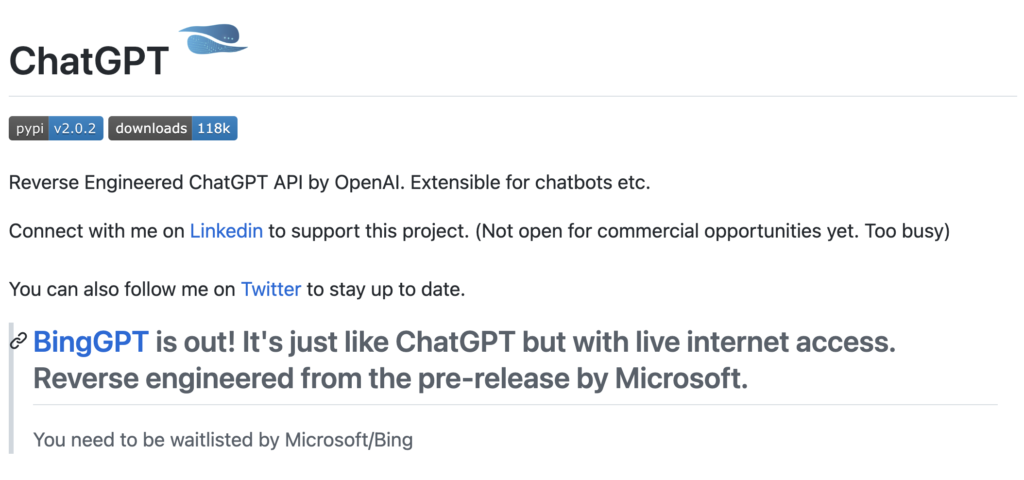
5. Ask ChatGPT To Imagine Use Cases For The API
The ChatGPT API, which is a part of OpenAI’s GPT-3 platform, can be used for a wide range of applications that require natural language processing and generation. Here are some use cases:
- Chatbots: The API can be used to create highly effective chatbots for customer service, technical support, and other applications. The chatbots can respond to user inputs in a natural language, providing quick and accurate answers to user questions.
- Content creation: The API can be used to generate high-quality content, such as articles, blog posts, social media updates, and other types of written content. This can save time and resources for content creators and publishers.
- Language translation: The API can be used to translate text from one language to another. It can generate natural language translations that are accurate and fluent, helping businesses and individuals to communicate more effectively with people from different countries and cultures.
- Personal assistants: The API can be used to create personal assistants that can help people with various tasks, such as scheduling appointments, setting reminders, and providing recommendations for products and services.
- Educational applications: The API can be used in educational applications, such as language learning and writing assistance tools. It can help students to improve their writing skills and language proficiency by providing real-time feedback and suggestions.
These are just a few examples of the many possible use cases for the ChatGPT API. The API is highly versatile and can be adapted to many different applications, making it a valuable tool for businesses and developers.
You want more chatGPT content? Check out our best chatGPT SEO tips!

